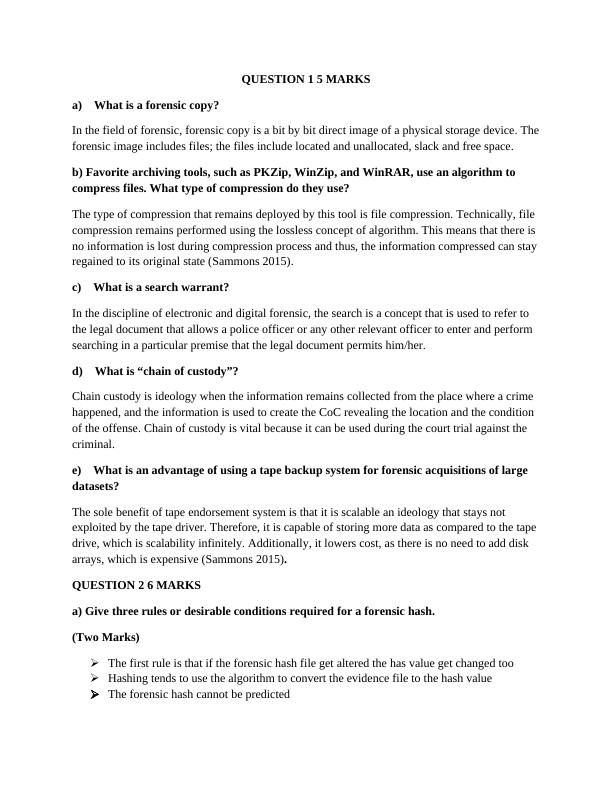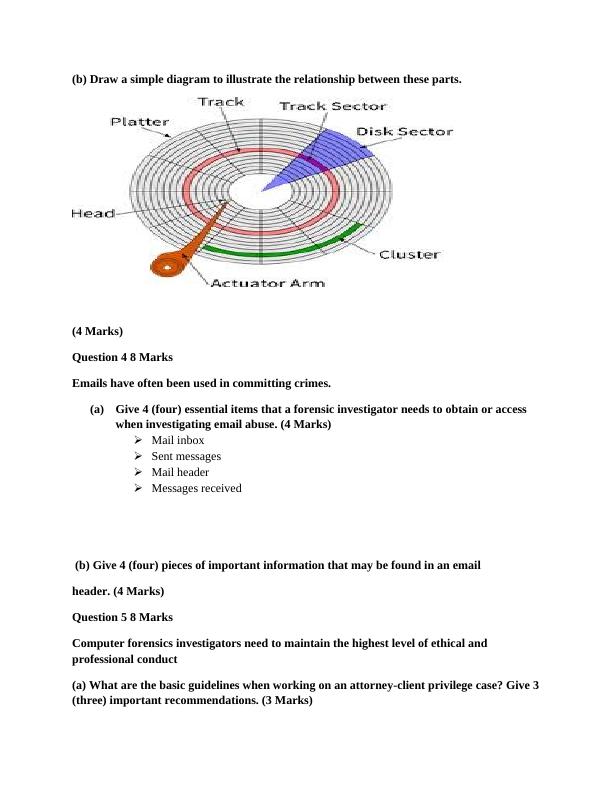Electronic and Digital Forensic: Study Material with Solved Assignments
Question 1: Definition of forensic copy, compression algorithm used by popular archiving tools, definition of search warrant, definition of chain of custody, advantage of using tape backup system for forensic acquisitions. Question 2: Three rules for a forensic hash, two key concerns when acquiring data from a RAID server, differences between computer forensics and data recovery. Question 3: Components of a disk drive and their relationship. Question 4: Key items for a forensics investigator in email investigations. Part B: Various questions related to case reports, evidence custody forms, proprietary format acquisition files, encryption algorithms, initial-response field kit, FAT database, extraction function, identifying unknown graphics file format, components of a search warrant. Part C: Scenario-based questions on evidence acquisition techniques, integrity of digital images, rootkits vs collection of data, corporate investigation, data compression techniques, actions for files that cannot be opened, questions to ask in computer crime response, file timestamps as evidence, emails stored on local server vs cloud server.
Added on 2023-06-03
About This Document
Electronic and Digital Forensic: Study Material with Solved Assignments
Question 1: Definition of forensic copy, compression algorithm used by popular archiving tools, definition of search warrant, definition of chain of custody, advantage of using tape backup system for forensic acquisitions. Question 2: Three rules for a forensic hash, two key concerns when acquiring data from a RAID server, differences between computer forensics and data recovery. Question 3: Components of a disk drive and their relationship. Question 4: Key items for a forensics investigator in email investigations. Part B: Various questions related to case reports, evidence custody forms, proprietary format acquisition files, encryption algorithms, initial-response field kit, FAT database, extraction function, identifying unknown graphics file format, components of a search warrant. Part C: Scenario-based questions on evidence acquisition techniques, integrity of digital images, rootkits vs collection of data, corporate investigation, data compression techniques, actions for files that cannot be opened, questions to ask in computer crime response, file timestamps as evidence, emails stored on local server vs cloud server.
Added on 2023-06-03
End of preview
Want to access all the pages? Upload your documents or become a member.




